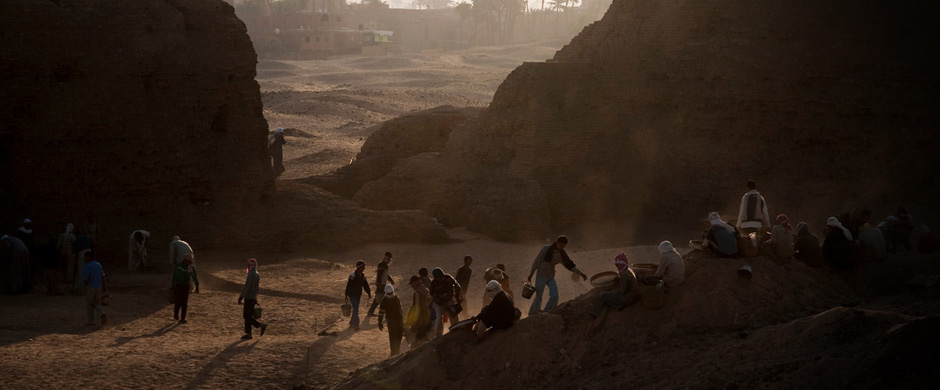 | IN THE FIELD
| IN THE FIELD

Archaeological Excavations
Abydos, Egypt
The Institute of Fine Arts is deeply involved in one of the most ambitious and extensive archaeological projects current in Egypt. The Institute co-sponsors with Princeton University, excavations at the site of Abydos in southern Egypt. Read more about the excavations at Abydos, Egypt.
Aphrodisias, Turkey
The ancient city of Aphrodisias provides an unusually rich and vivid record of the monumental civic culture of Classical antiquity. For fifty years, New York University has sustained an extensive program of research, excavation and conservation at this important site, which lies ca. 150 kilometers east of the Aegean Coast in Turkey. Click here to make your gift. Read more on the Aphrodisias excavation website [opens in new window].
Samothrace, Greece
Since 1938, the Institute has worked in the Sanctuary of the Great Gods on the island of Samothrace. The Sanctuary is not only home to one of the most significant mystery cults of the Hellenistic era, but it also features the most innovative architecture of the period, gifted by Hellenistic royalty and seminal in the formation of Hellenistic and Roman architectural ideas. Read more about the archaeological excavations in Samothrace.
Sanam, Sudan
The Temple of Sanam, located in northern Sudan, was built in the 7th Century BCE by the Kushite king Taharqo. Taharqo, a native Nubian who also ruled over Egypt, constructed the temple in an Egyptian style and dedicated it to the god Amun; nevertheless, many traces of the king’s distinctive Kushite culture are still to be found at the site. The project, initiated in 2018 and marking the first excavations at this important site in over a century, is investigating not only how the temple was used by Kushite kings but what this monument might have meant to the local Nubian population living around it. Current areas of investigation include the only known faience production areas of the Napatan period of Nubian history, and a monumental mud brick building of the early first millennium BC.
Selinunte, Italy
Since 2007, the Institute has sponsored a major new archaeological mission on the acropolis of Selinunte (ancient Selinus) in western Sicily. The mission focuses on the main urban sanctuary of this ancient Greek colony, where some of the most innovative temples of the Greek world can be found, from the foundation of the colony in the 620s BCE until the city’s abandonment in 250 BCE during the First Punic War. Between 2007 and 2009 the project focused on the Hellenistic Temple B, from 2010 on the Archaic oikos Temple R, and since 2018 the team has turned to the monumental Temple C. In addition to architecture, finds ranging from pottery to sculpture and jewelry help us to understand the ritual life of a Greek colony in one of the most culturally diverse regions of the ancient Mediterranean. Read more about the IFA excavations at Selinunte.
Contact the Institute
Building Hours
Contact Information
If you wish to receive information on our upcoming events, please subscribe to our mailing list.
